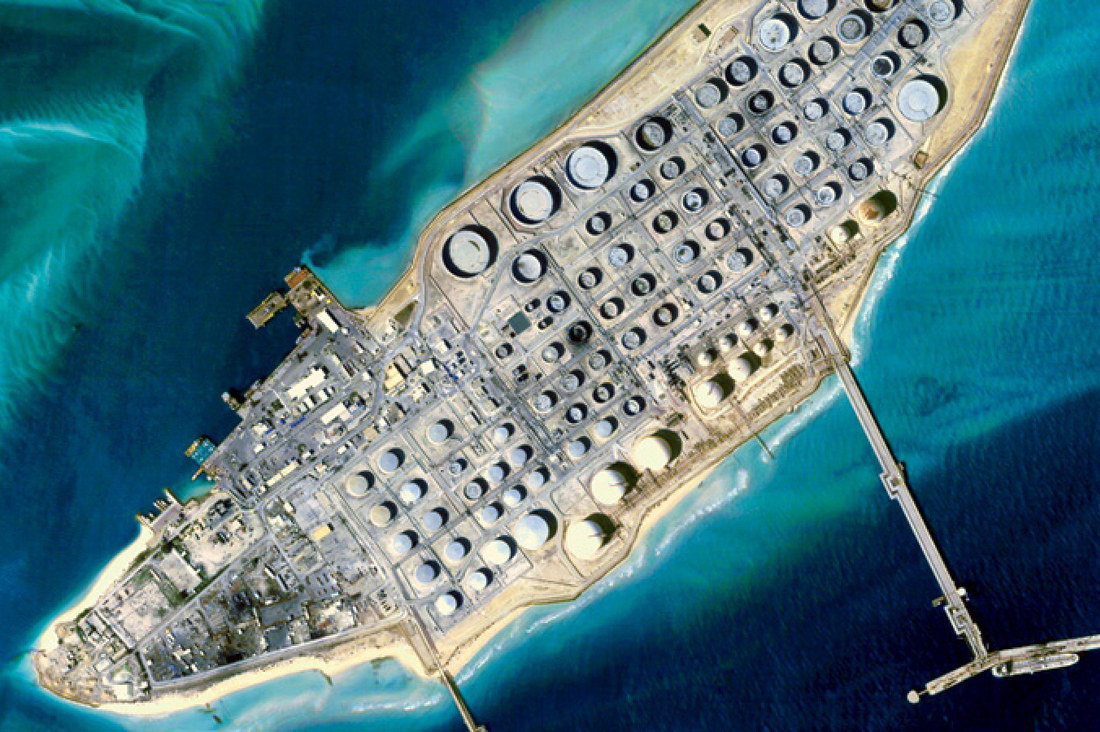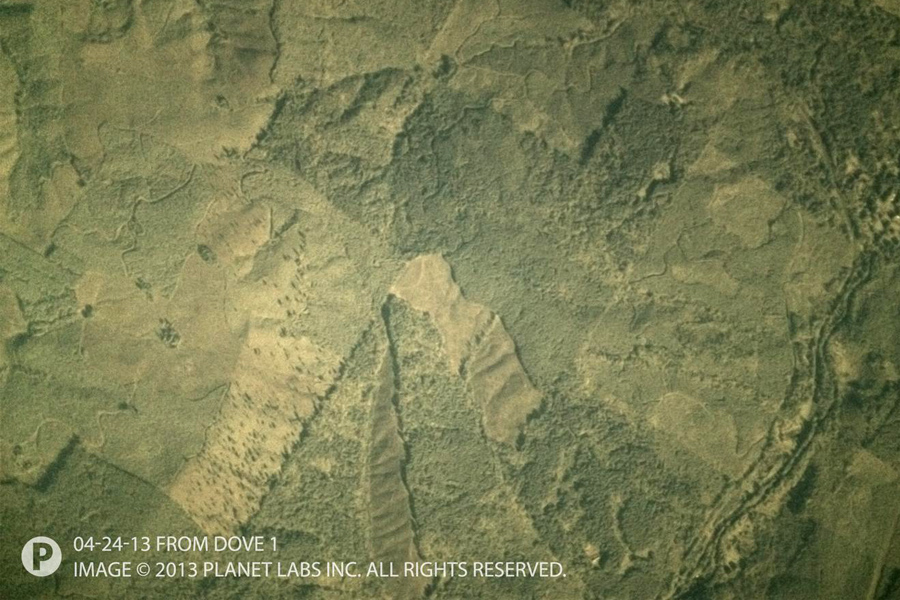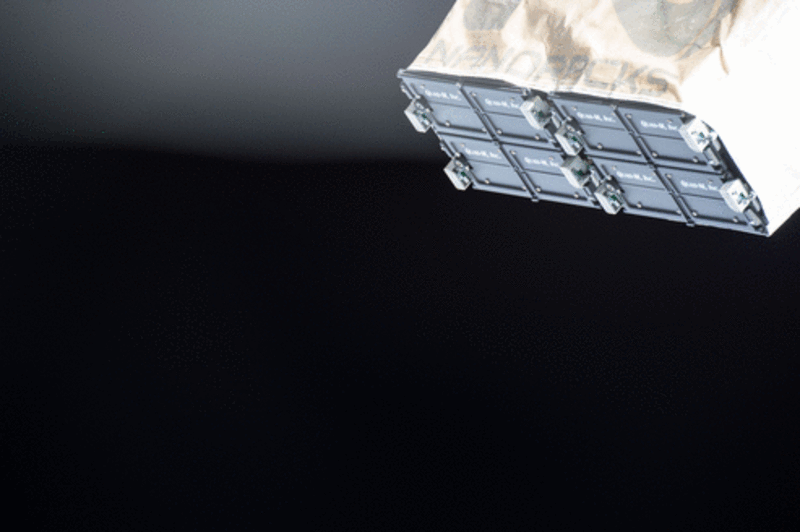American history "Earth remote sensing"

Competition satellites in the United States entered a new round. The years when companies creating satellites appeared like mushrooms, the era of mergers and acquisitions is leaving. Last news discussed: Planet Labs acquiring the satellite division of Google Terra Bella. Where is the profit in space and where everything is moving, we will try to figure it out.
Planet Labs and Skybox appeared about the same time - in the late 2000s. These were yesterday’s young students ’and graduate students’ teams who decided to start astronautics by building small spacecraft and capturing a part of the growing Earth remote sensing (ERS) market. SkyBox chose a more difficult path: they took up a rather serious project of a group of 36 SkySat microsatellites, each weighing 70 kg and almost a meter in diameter.

')
Using their know-how in optical design, matrices and data processing, they were able to achieve impressive performance. From a height of 600 km, their apparatus could shoot with a detail of about 1 m, and not only photos, but also videos.
More importantly, SkySat images also have commercial value, like high-resolution multispectral imagery, thanks to several spectral filters, and an orientation system that provides reliable geolocation.

In general, SkyBox technology can be called flawless. There is a good article about their development. They also attracted investments: $ 3-18-70 million, round after round. In the end, when they made three satellites, launched two of them from Baikonur, and ordered another 16 production, Google bought them for half a billion and renamed it Terra Bella. Although the initial estimates of the company reached $ 0.7 and $ 1 billion.
The commercial use of SkySat was assumed to be wider than that of existing satellites due to the large number of devices, for an increased frequency of shooting specified areas of the terrain, but, in general, the business model did not differ much from the offer of other similar companies, video was just added.
The company Planet Labs went the other way, and began to make satellites even less - in the standard CubeSat . The advantages of this standard are that it can be launched by almost any passing rocket, carried on the ISS, purchased components from an online store, in the USA a huge number of students have experience developing such satellites, since He developed as an educational standard. The disadvantages of CubeSat come from their advantages: low reliability of industrial components (although SkyBox is also industrial), small dimensions do not allow to deliver sufficiently productive optics, power supply system, radio link, propulsion system ... Until Planet Labs, almost no one considered CubeSat as an applied technology, which you can earn or get valuable scientific data (in Russia, still not considered).
In 2013, Planet Labs launched two of its Dove satellites, weighing 5 kg into orbits of 260 and 550 km in height, and in a couple of months published the first images from them (apparently, the last ones).

The pictures turned out to be color, with a resolution of 3-5 meters. But they cannot be considered as full-fledged multispectral data, since All Planet Labs satellites have a conventional Bayer filter photomatrix, so the use of such images in agriculture, forestry or geology is limited. In fact, they do not show anything that cannot be seen with the naked eye. Dove could be considered a “cosmic digital camera” for simplicity, and limited capabilities, compared to competitors. At the same time, in the category CubeSat these are very good devices - practically the best. For example, several satellites survived in the crushing explosion of the Antares rocket in the fall of 2014. They did not fly into space, but, according to the company's employees, they were able to get involved and show the efficiency of the systems.

Planet Labs also had an Idea, the revolutionism of which surpassed all predecessors that excel in optics and data quality. The company offered to launch many satellites. Not three dozen, like Skybox, but more than a hundred. According to their plans, 125 satellites in near-earth solar-synchronous orbit should be a “scanning line” that captures the image of the entire earth’s land once a day. Photo of the Earth once a day with a resolution of 5 m. Every day. This is a fantastic opportunity, even when adjusted for cloudiness, which many could only dream of, in fact, the DVR of the entire planet. Now this possibility is only in the resolution of 500 m thanks to NASA Terra and Aqua satellites.
And the words did not disagree with the case. Six months later, after the first flight tests, Planet Labs has already launched 28 pieces. Then more than fifty each year. There are launches at any opportunity: from the ISS, with state launches, on conversion ballistic missiles, missiles from the USA, Russia, India, Japan — it doesn’t matter what orbit and altitude they fly.

On the new beautiful site you can see numerous photos from these satellites.
The low cost of components, the speed of assembly and launch, large batches, ensured the evolutionary development of technology, unthinkable earlier in the space industry. In the two years since the first launches, the company has implemented twelve generations of satellites, each of which was more technological, more productive and more efficient than the previous one. Although the fundamental limitations still do not jump: weak energy, a small telescope, a weak orientation system ...
In terms of investment, the company also flooded after the first photos. Since the summer of 2013, the company has received more than $ 180 million in four rounds, including $ 50 million from Russian investor Yuri Milner. New investors attracted dozens of running vehicles, beautiful photos of the Earth, and, of course, the same Idea. By August 2015, the company had reached the psychological mark: 101 satellites in orbit, and this despite the fact that in two years she lost 36 vehicles in two rocket explosions.
Until yesterday, the number of satellite groups consisted of six dozen devices. Most of the devices launched were output from the International Space Station, and after such launches they live for about a year - then they burn in the atmosphere.
But yesterday, the PSLV-37 Indian rocket launched 88 more satellites into a sun-synchronous orbit, where their total number reached 100!

Guide Planet Labs suggested more ambitious steps. It was partly thanks to them that the lunar microsatellite project was born, when I learned that Planet was thinking of launching its Cubsat to the Moon, with the Roscosmos rocket. It looked like the company was simply not able to efficiently digest its millions. More experienced participants in the microsatellite market started talking about “ intoxicating with cube-heads ”, hinting at an inflated market bubble that cannot recoup the investment.
At the same time, representatives of the company shared their commercial successes: the amount of concluded contracts for the supply of data exceeded the amount of invested funds. Although to conclude a contract - it does not mean to execute it and make a profit - satellite multispectral data have not yet reached commercial quality.
Planet quickly found use for their money. Understanding that the Moon does not promise profits, they made a more promising investment: they acquired the German company BlackBridge, which has been operating in the space imagery market since 2011, supplying data from its RapidEye satellites.
RapidEye satellites are far from cubes: a mass of 150 kg, a meter across, five pieces flying since 2008. The resolution of the images is also about 5 m as in PlanetLabs, but this is already professional multispectral data of a commercial level. Despite the high-quality equipment, the project had a difficult path: in 2011 it survived bankruptcy, was bought out for $ 19 million, in 2012 showed a profit of $ 40 million. In 2015, the company attracted $ 18 million investment to deploy a new one-meter resolution (actually - SkySat), but the same year Planet Labs was bought (the amount of the transaction was not disclosed). This acquisition seriously strengthened Planet, providing a rich archive of data from previous years, and a stable business with hundreds of regular customers. Demonstrating the possibility of combining data with RapidEye and Dove, the company released a video where you can watch changes on Earth for 6 years.
Previously, this was possible only at a resolution of 22 meters and a frequency of about two weeks thanks to Landsat satellites.
At the end of 2016, rumors spread in Silicon Valley: Google gets rid of Terra Bella and sells it not to anyone, but Planet Labs. They talk about the acquisition cost of $ 300 million, i.e. Google will lose $ 200 million on this transaction, although the conditions are not known yet, perhaps the difference is compensated by satellite images.
How did it happen that a company that surpasses its competitors technologically, in which several times more money was invested, turned out to be absorbed by the creator of “toy” cubes? Terra Bella was a major threat to DigitalGlobe, the current leader in the global market for remote sensing of the Earth, which delivers ultra-detailed images up to 30 cm to government and commercial customers - to Google. But it turned out that Google is more profitable to buy pictures on the side than to contain its own unit.
It is difficult to understand and the motivation of Planet Labs - this acquisition contradicts the stated strategy: to shoot the entire Earth at a resolution of 5 m. The Terra Bella satellites shoot several times better, which means they need several hundred to achieve the same goal.
Perhaps Planet Labs buys primarily the technology and expertise of Terra Bella to apply them in their project. It is also possible that the company meets the demands of customers who want to see more and better. It is appropriate to recall here that since 2015, the US National Geospatial-Intelligence Agency (NGA) has reported interest in data supplied by commercial companies Planet Labs, Terra Bella and Black Sky.
In October 2016, Planet Labs received a trial contract for 7 months for $ 20 million for, in fact, an espionage survey. They will not see the enemy tanks and the launch of the missiles, but they will be able to determine the erection of long-term structures or the movement of large-scale technical equipment with high efficiency, which the Pentagon will not provide with its own means.

It is appropriate to recall the previous resonant merger of two private space companies DigitalGlobe and GeoEye in 2013. In 2010, they received $ 3 + billion NGA contracts each, and then decided to unite for more efficient use of public funds. It seems that the unification of Planet Labs and Terra Bella decided to carry out immediately, without waiting for three years, it is easier for the state, working with one contractor, and satellite builders - so they can develop a single ground network for receiving and processing data.
In general, the merger of Planet Labs and Terra Bella may indicate a decline of romantic expectations from the micro and nanosatellite revolution. It was expected that the use of industrial components and the miniaturization of spacecraft would lead to cheaper data, the deployment of huge satellite constellations operating in the interests of precision farming, Google and Yandex, market analysts and investment research, and it all boiled down to government orders from the military budget. Of course, commercial activity will continue and will be profitable, but the Pentagon has quite clearly defined its interest: “we should be able to buy what we need and when we need”, i.e. regardless of commercial success, the state intends to maintain the functioning of the existing satellite groups, and, apparently, their further development.

A source
In this context, the experience of Planet Labs and Terra Bella should be taken into account by domestic commercial satellite manufacturers, possibly retaining the “revolutionary romance” of commercial space, and by government agencies responsible for the public-private space partnership. There are technical teams capable of implementing projects comparable to Planet Labs and Terra Bella in Russia. But without a clearly defined state interest in the results of such satellites, it is impossible to go from the willingness to make a satellite to the delivery of images from orbit.
Source: https://habr.com/ru/post/370179/
All Articles